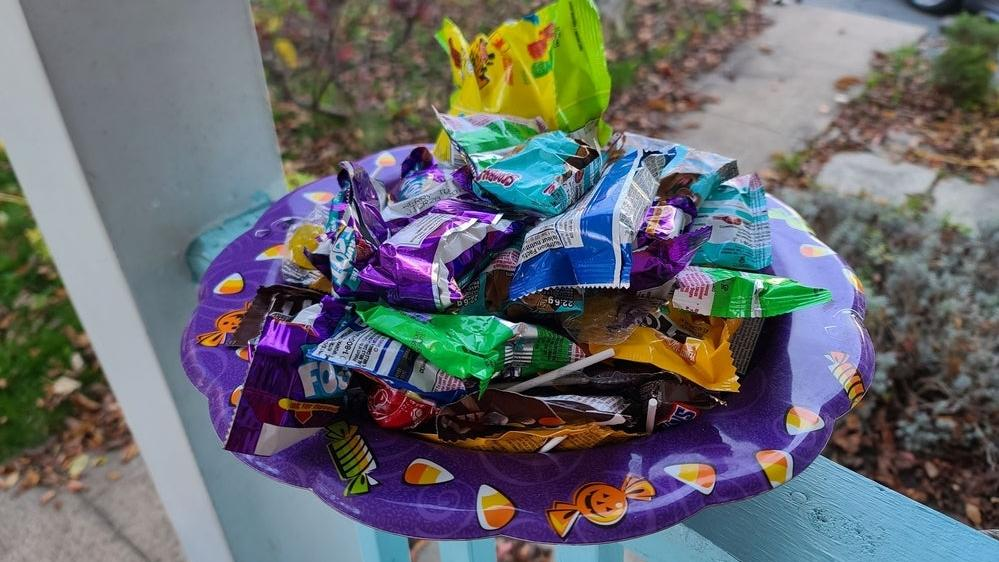Halloween's Greatest Horror This Year Might Be A Sugar Shortage
The scaries might be setting in early this year, but for a different reason: Our candy is in trouble.
Imagine going to the trouble of trick-or-treating door to door in a cardboard Barbie box costume only to end your night with an essentially empty pumpkin pail. Come October, that nightmare could be real, thanks to a looming candy shortage. I know it's a scary thought, but sometimes reality is worse than fiction.
While we all bake under the summer sun, candy makers across the country are feeling the heat in a different way. The Wall Street Journal reports that a sugar shortage, import restrictions, and international competition all have confectioners questioning whether they have enough supply for Halloween 2023 and the upcoming holiday season overall.
How climate is affecting the sugar supply
Both candy makers and sugar farmers are reportedly looking to point the finger for the rising cost of sugar. Ultimately, El Niño, a climatological phenomenon that periodically affects weather patterns, takes much of the blame for reduced crop production.
"El Niño ... is known for bringing heavy rainfall to some regions, such as Latin America and the southern U.S., while causing warmer weather and droughts in others, like Australia and south Asia," said Nidhi Jain, a specialist at business intelligence firm The Smart Cube company, in a statement emailed to The Takeout. Jain added that El Niño's effects could reduce sugarcane yield by 10-15% globally.
The tighter supply couldn't come at a worse time, of course, since we are rapidly approaching the most sugar-packed holidays of the year, and confectioners need to prepare. The United States Department of Agriculture reported in June that U.S. raw cane sugar prices increased to 42.56 cents a pound in May, the highest price since January 2011. Midwestern refined beet sugar, another type of sugar crop often used in confectionery, was up to 62 cents a pound in May.
How the supply chain is impacting candy
On top of price increases on sugar, U.S. agriculture policies surrounding the crop are not making the situation any easier. At least 85% of U.S. sugar purchases must come from domestic processors. Plus, for the 15% that companies are allowed to import from other countries, there is a tariff of 1.66 cents per pound. The tariff increases to 16.21 cents per pound if more than 15% is imported, per the USDA. As a result of the sugar shortage here at home, though, it's possible there won't be much of a choice—some companies might just have to contend with paying those higher tariffs on imported sugar.
Unfortunately for U.S sugar farmers, the increased tariffs aren't enough to keep candy companies from going outside the country to get their sugar. Many of these farmers argue that the real issue is that foreign governments subsidize sugar production in their countries. This keeps prices very low compared to domestic sugar pricing, making it hard for U.S. farmers to compete.
Back in April, both Hershey and Mondelez, global companies that produce sweets like Reese's, Kit Kat, Toblerone, and Sour Patch Kids, acknowledged that the rising price of sugar is a challenge that has led to higher costs.
On a smaller scale, Atkinson Candy, the Texas company that produces Chick-O-Stick and Slo Poke, has been struggling to fulfill its remaining orders for the year on items like hard candies, caramels, and peanut brittle because of the sugar shortage. Eric Atkinson, president of Atkinson Candy, told The Wall Street Journal that after being turned down by 11 sugar suppliers who ran out of product, the brand was able to find a supplier that imports from Colombia.
"We were down to the point where we were about to run out," Atkinson said to The Wall Street Journal. "We would've been going to Costco."
There are no easy answers to this burgeoning candy crisis, and ghouls and goblins should brace themselves to be a bit disappointed in their haul come October 31. Unless, of course, your neighborhood chooses to hand out some awesome stickers instead.
